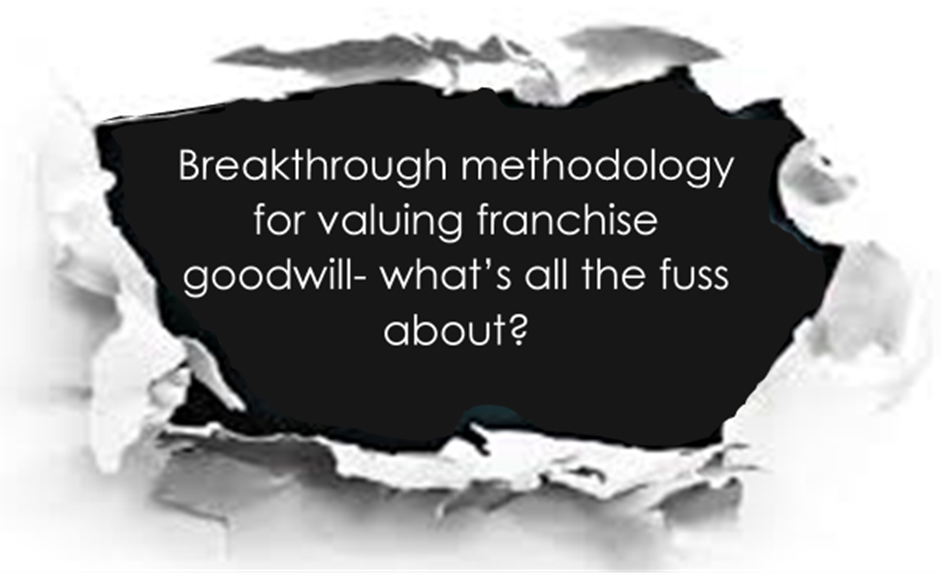Are traditional franchise models dead or on life-support? … A 4-Step Action Plan for Survival

1. Prevent Cardiac Arrest

The demise of some big franchise brands has led many franchise commentators to argue that traditional franchising models have reached a degenerative stage and some even reckon that ‘franchising as a business method will need to be dismantled and reconstructed’ to Prevent Cardiac Arrest.
Many franchise systems are either dead and buried, in palliative care, or in an ambulance heading for major surgery. This is because their business model is clunky and outdated. Adverse media reports about franchisee unrest amongst brands such as Pizza Hut, IGA, Dominos, Wendy’s, Donut King, 7-Eleven, Max Brenner, Mortgage Choice, Red Lea Chickens, Caltex, Brumby’s, Oliver Brown, and Aussie Farmers have not helped the sector. In fact, recurring systemic problems have sent shockwaves through the sector leading to a government enquiry.
Whilst views expressed these commentators might be true in some instances, they erroneously assume that e-commerce is not franchisable and that it cannot co-exist with traditional bricks and mortar models. Survival of franchising is not the issue; the issue is what type of products and services are still franchisable and in what format. No dismantling or reconstructing is required as this implies that franchising is either broken or dysfunctional which it clearly is not in either case. What is needed is an intelligent application of franchising theory to the adaptation of e-commerce to develop convergent business models. Franchising is still relevant but as many models have evolved in the last fifty years, new ones must now be grafted for the next fifty.
2. Buy Time
The refinement of a new breed of franchise models and the proliferation of traditional formats inevitably present contractual complexities, property, and decision rights issues. These challenges are real and yet not well understood by many franchisors and their advisors. In fact, one of the main threats to the present and prospective health of existing and new franchise systems is sticking to old model of setting initial, ongoing, and exit fees. Forward-thinking franchisors should urgently Buy Time by reviewing their business/revenue model and explore contemporary structures that blend the latest research in agency and proprietary modelling to maximise participation and goal alignment.

For many franchise systems, their revenue model is often driven by market trends rather than sustainable economics. However, if a franchisor is to successfully attain adequate compensation for substituting company-store risk adjusted cash-flows for franchise-derived cash-flows, it must account for monitoring costs, risk-sharing, and efficiency gains in designing its revenue model. Indeed, these three factors affect the level of agency company-operated outlets) incurred by the system, and the franchisor’s ability to reward its franchisees. For this condition to hold however, agency costs must be defined in terms of both costs and gains to the franchisor resulting from participating in a franchise relationship. Costs represent the incremental monitoring costs, and pecuniary and non-pecuniary costs attributable to franchisees behaving in a way that is not consistent with the franchisor’s expectations, whilst gains comprise explicit and implicit value generated by risk-sharing and efficiencies.
3. Restart the Heart

It goes to reason that a franchisor should consider a franchise arrangement only when the expected returns from franchise relationships equal or exceed that which could be achieved by operating a bunch of company-owned businesses. Franchising may allow the franchisor to lower its monitoring costs, but it may have to trade off any gains with franchisee-generated problems, such as inefficient investments and free-riding. In any case, if monitoring costs do not rise, any efficiency gains delivered to the system by franchisees increasing revenues beyond that which would be expected of company-owned stores would justify the case for franchising. These conditions are captured in economic equilibrium where the present values of cash-flows generated by each franchisee equal the initial investment required to generate these cash-flows and when the net present values of the franchisor cash-flows equal those of that franchise business when operated as a company-owned business and the pre and post agency monitoring costs are equal. This level of sophistication in modelling revenue sharing might mean Restarting the Heart now for longevity.
4. Restore Quality of Life

Whilst economic equilibrium has great appeal, in fact it is more of an ideal than the deal. Even though a franchise system may not be in equilibrium, it does not mean that the franchisor is dissatisfied with the business. Economic equilibrium is a goal, not the purpose. Best practice franchisors should set a level of operational efficiency that is tolerable to Restore the Quality of Life and that which is expected given the environmental forces facing the business, and the level of agency costs required to power the system’s governance structure.
Dr Maurice Roussety is a Consulting Strategist at DST Advisory and Lecturer in Small Business and Franchising at Griffith University in Queensland, Australia. He is available for consulting and public speaking engagements and can be contacted at maurice@dstadvisory.com or visit him at www.mauriceroussety.com.au
Dr Maurice Roussety is a Consulting Strategist for DST Advisory and Lecturer in Small Business, Franchising and Entrepreneurship at Griffith University in Queensland, Australia. He has worked with leading organisations such as Queensland Transport, IAG, Westpac, Australia Post, Coles Myer, Red Rooster, Commonwealth Bank, ACCC, and Optus. Maurice holds a PhD in Intellectual Property and Franchise Goodwill Valuation. He also holds a Master’s degree in Leadership and in Business Administration. He is available for consulting and public speaking engagements and can be contacted further at maurice@dstadvisory.com or you can visit him at www.mauriceroussety.com.au



